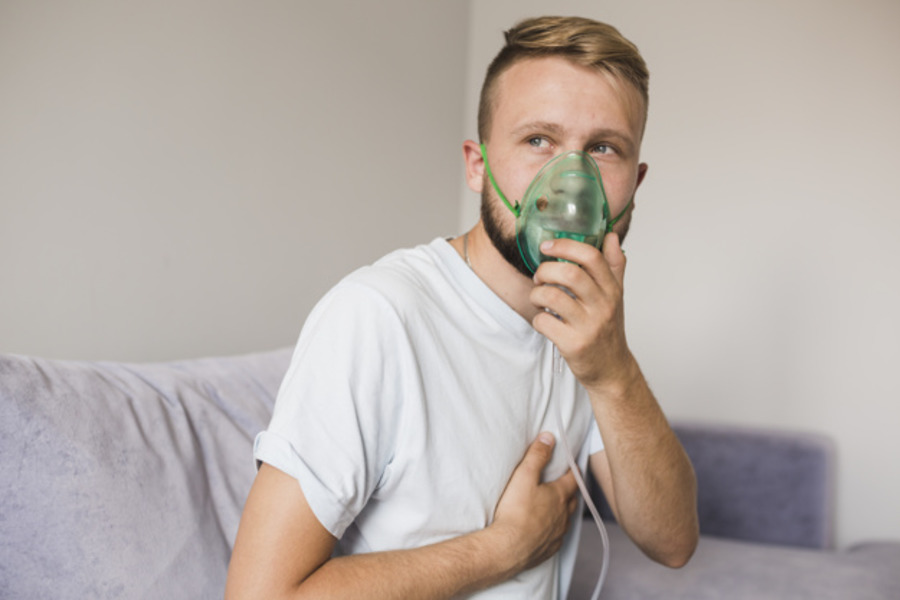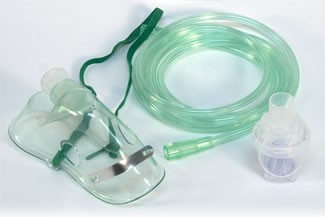What is a Nebulizer? How to Choose The One That Fits You Best

If you want to know about nebulizers, you’ve come to the right place. We’ve put together everything you need to know! In simple terms, a nebulizer is a device that some call a breathing machine. The purpose of a nebulizer is to make mist out of medication! This, therefore, allows it to enter your lungs, and improve your breathing (or whatever the medication was intent upon). Usually, people use nebulizers to cure cystic fibrosis, asthma, COPD, and other respiratory ailments and/or conditions.
Nebulizer Versus Inhaler - What’s the difference? What is a nebulizer?
Inhalers and nebulizers work in a very similar fashion but are typically used in different ways. Inhalers are perfect for people who need medication very quickly and at a moment’s notice. Inhalers allow you to inhale medicine in a mist form with little to no difficulty whatsoever, in a super-efficient manner. Nebulizers on the other hand take a lot longer. Some people need a full 15 minutes to breathe in all of the medicine. This is acceptable because nebulizers administer a lot of medication over that time, whereas inhalers do small amounts at a time.
So how does a nebulizer work?
As we mentioned, nebulizers essentially turn liquid into a mist. Overall a nebulizer has four parts. The mouthpiece is the first component. Some manufacturers may label this as the face mask. This is what allows the patient to breathe in the newly acquired mist. The second piece is the compressor. The compressor is what actually vaporizes the liquid medicine and turns it into a mist. Thirdly, there is of course a battery or power source of some kind that powers the compressor. Last but not least is the cup! The cup is of course where the actual medicine sits before it’s vaporized!
What are the different types of nebulizers?
Fortunately for most patients out there, there are actually quite a few nebulizers available. Each one works differently and excels in different areas. Each one also comes in different styles. You can get one specifically designed to use at home, but you can also get one for on the go. The on the go options tend to be small, light, and extremely portable, whereas the at-home options are large and a lot more efficient. The first type of nebulizer we’ll be discussing is the ultrasonic nebulizer. This particular option uses sound ultrasonic waves to vaporize the liquid medicine and create an inhalable mist. This type of nebulizer is super efficient but only comes in one size. This is acceptable because it wouldn’t get any faster regardless of design. The next option is the jet nebulizers. Instead of using ultrasonic waves like the previous option, jet nebulizers tend to use mostly air that's been compressed. Typically jet nebulizers are really big and are used at home for that exact reason. They also require a lot more power. The next option is mesh nebulizers. Typically mesh nebulizers are very compact options, as well as one of the quickest and easiest to use options.
What customization options are there?
When it comes to customization options, generally the accessories are what people go for. Typically the only parts that can be swapped out are the original four, or in other words the mask, cup, compressor, and power source. You can swap the power source for something more powerful. You can swap the mask for something more comfortable, change the size of the cup, and even customize the compressor. (as mentioned above (some aren’t even compressors)). You can choose from a variety of colors, decals, and trinkets (although these are typically for people not suffering from serious ailments). You can even get an air filter to ensure you’re only breathing in the medicinal mist. There are filter valves you can try, dust blockers, and so much more.
How do I go about using a nebulizer?
Nebulizers are quite easy to use. First things first, but the medicine into the cup (or whatever you’ve attached to act as the cup). Next, you’re going to want to connect all pieces of tubing. Make sure that the tubing between the compressor and mask is set up, as well as the appropriate linkages between the cup and the compressor (otherwise you won’t be vaporizing anything!). The next thing you want to do is actually turn the nebulizer on. Once you’ve done this, put the facemask/mouthpiece up against your face. Make sure it’s snug, but also comfortable. Now that you’re all set up, start taking slow deep breaths. When you breathe in, you’re going to want to hold it in for 2 or so seconds before breathing out. This ensures the medicine actually stays in your lungs. Keep an eye on the cup you're using. Once the medication is completely gone you can stop. On average this will take about 13 minutes. Once you’ve finished, be sure to wash everything thoroughly (both your hands, face, and nebulizer).
What should I do if I get dizzy?
If you experience dizziness stop right away. Wait a few minutes and try again. If you still feel dizzy (regardless of severity) you need to stop and call your doctor immediately. Dizziness may be a sign that your medication isn’t working for you. Continued use may result in serious harm.
How do I clean my nebulizer?
When it comes to cleaning your nebulizer, there are usually two routes you need to take. The first is a quick clean after every use. You’ll want to wash the entire nebulizer (as well as your hands and face) thoroughly after every use. Just a basic rinse. Regardless of which type of nebulizer you’re using, it may be a good idea to disinfect the device once or twice a week. Most people recommend a solution of water and vinegar, whereas others may suggest rubbing alcohol (make sure to check with your manufacturer because using the wrong cleaning solution may damage your device (and we take no responsibility)). All in all your nebulizer parts and pieces are designed to last about half a year or six months. This is accurate regardless of the device, although some medications may wear it out sooner. Do keep in mind that some medication types may require different methods of cleaning!
For more information!
For more information we recommend you speak with your family doctor or general practitioner. Always make sure your doctor knows about which off the shelf medications you're taking, for medicine interactions aren't always positive! With all of this in mind, we hope this article on nebulizers helped you find out everything you need to know!
Related Products
 |
Amsino 705-530 - Nebulizer Kit, Child Mask Nebulizer Kit, Child Mask (Nebulizer cup, Child Aerosol Mask, 7ft Oxygen tube) |


